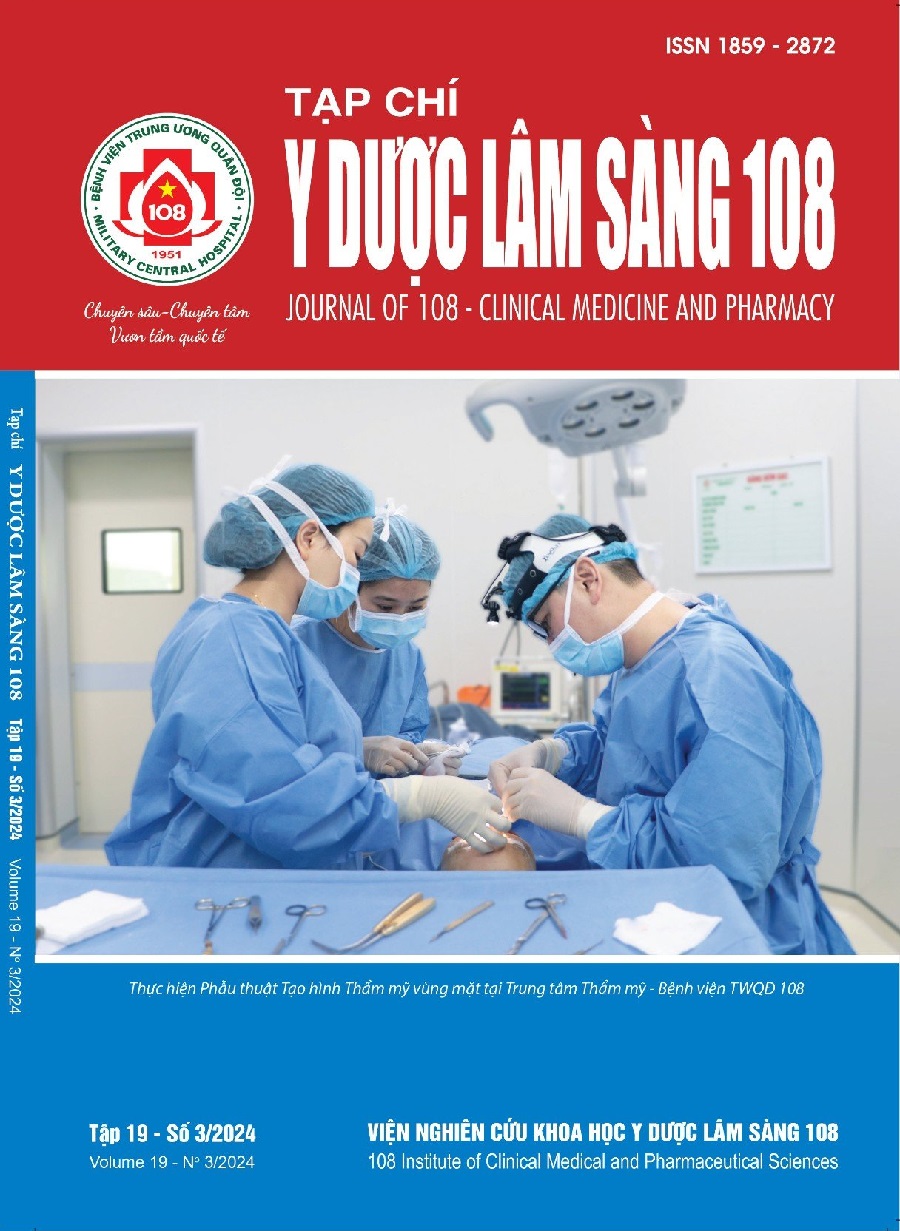Evaluation of the effectiveness of improving vertebral body height with percutaneous vertebroplasty in the treatment of spinal fractures due to osteoporosis
Main Article Content
Keywords
Abstract
Objective: To evaluate the effectiveness of improving vertebral body height of percutaneous vertebroplasty in the treatment of vertebral body collapse due to osteoporosis. Subject and method: Intervention study and longitudinal follow-up on 150 patients with vertebral collapse due to osteoporosis undergoing percutaneous vertebroplasty (THDQD) at Friendship Hospital from January 2017 to January 2024. Result: Among 150 patients, women accounted for the majority with 86 patients (57.3%). The average age of the study group was 78.4 ± 8.9 years old. The majority of patients received 1 vertebra intervention, 85.3%. Of the 182 vertebral bodies that were performed, most were lumbar vertebrae with 67%, 160 vertebrae (87.9%) were accessed through a pedicle and 69.8% of vertebrae had >5ml of cement injected. Comparing the vertebral height before intervention with immediately after intervention and 1 year after intervention, vertebral body height improved in both the anterior wall, middle wall, and posterior wall (p<0.01). The difference in vertebral body height immediately after intervention and after 1 year was no difference (p>0.05). Conclusion: THDSQD treatment method helps improve the height of the collapsed vertebral body immediately after intervention and maintains it for at least 1 year after intervention.
Article Details
References
2. Galibert P, Deramond H, Rosat P, Le Gars D (1987) Preliminary note on the treatment of vertebral angioma by percutaneous acrylic vertebroplasty. Neurochirurgie 33(2): 166-168.
3. Kawanishi M, Tanaka H, Ito Y, Yamada M, Yokoyama K, Sugie A, Ikeda N (2023) Treatment for Osteoporotic Vertebral Fracture - A Short Review of Orthosis and Percutaneous Vertebroplasty and Balloon Kyphoplasty. Neurospine 20(4):1124-1131.
4. Teng MMH, Wei CJ, Wei LC et al (2003) Kyphosis correction and height restoration effects of percutaneous vertebroplasty. AJNR Am J Neuroradiol 24(9): 1893-1900.
5. Hiwatashi A, Yoshiura T, Yamashita K, Kamano H, Dashjamts T, Honda H (2010) Morphologic change in vertebral body after percutaneous vertebroplasty: follow-up with MDCT. Am J Roentgenol 195(3): 207-212. doi:10.2214/AJR.10.4195.
6. Chang CY, Teng MMH, Wei CJ, Luo CB, Chang FC (2006) Percutaneous vertebroplasty for patients with osteoporosis: A one-year follow-up. Acta Radiol Stockh Swed 1987 47(6): 568-573. doi:10.1080/02841850600690405.
7. Voormolen MHJ, Mali WPTM, Lohle PNM et al (2007) Percutaneous vertebroplasty compared with optimal pain medication treatment: short-term clinical outcome of patients with subacute or chronic painful osteoporotic vertebral compression fractures. The VERTOS Study. AJNR Am J Neuroradiol 28(3): 555-560.
8. Hiwatashi A, Moritani T, Numaguchi Y, Westesson PL (2003) Increase in vertebral body height after vertebroplasty. AJNR Am J Neuroradiol 24(2): 185-189.
 ISSN: 1859 - 2872
ISSN: 1859 - 2872
